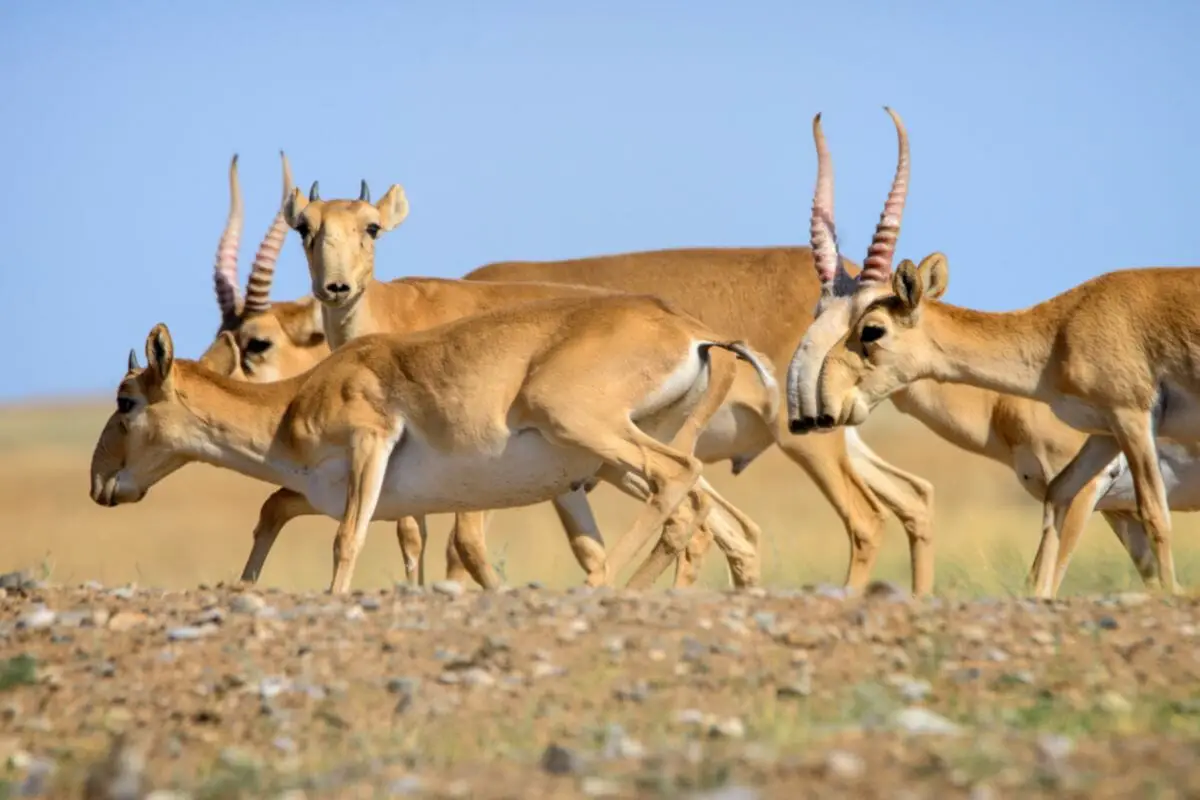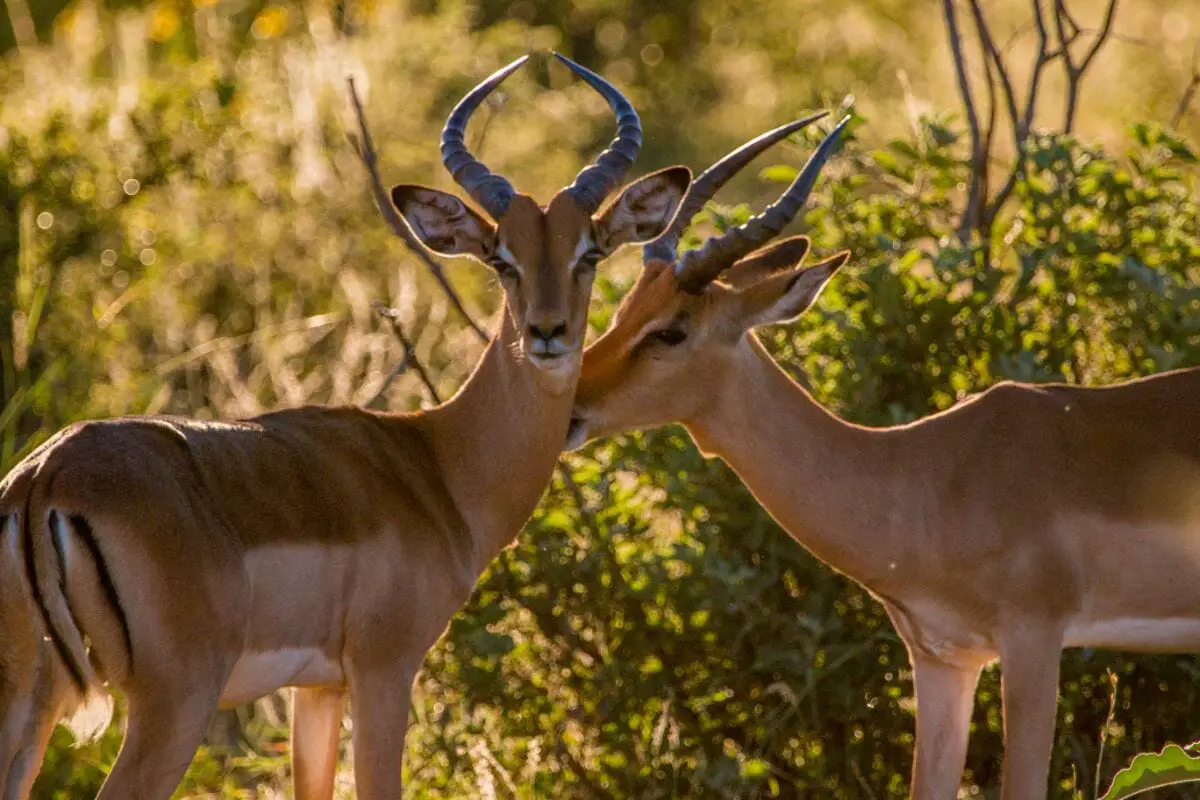The wide, vast prairies of the steppe can seem like yawning expanses, devoid of the hiding places and crevices that are needed for creatures to call it home.

Look a little closer, however, and you will discover a host of incredible animals that call the steppe home – and we have all of the information that you need to know about them.
Some of the animals that call the steppe home include:
Saiga
One of the most famous inhabitants of the steppes is the Saiga antelope. The species has been around since prehistoric times, but its numbers were drastically reduced by hunting in the 20th century and today, there are only approximately 200,000 left.
They live in large herds of up to, which makes them easy targets for hunters, though they do have some protection; their horns grow from their heads at an angle of 90 degrees, making them ideal weapons against predators.
At around the size of the average German Shepherd dog, the most identifiable feature of these animals tends to be their unique nose, and the shape of this has been compared to that of whales.
These noses allow them to filter out frozen air as well as prairie (Also check out Animals You Can Find On The Prairie) dust and are also used to help attract mates.
Przewalski’s Horse
Another animal that lives on the steppes is the Przewalski’s horse. This species is known for being a cousin of the horses we know and ride today but tend to be shorter, stockier and with thicker hairs – this allows them to more easily withstand the frozen lands of Kazakhstan and Mongolia, where the majority of the population live.
Przewalskis’ horses are also considered to be the oldest living equine species, having survived in the wild for over 10,000 years, and have never been fully domesticated.
Mongolian Gazelle
One of the most iconic animals of the steppes is Mongolian gazelles. Found in large herds across the grasslands of Central Asia, they are often seen running alongside camels or grazing beside sheep flocks.
Their distinctive stripes give them away, and they are able to run at speeds of up to 50 km/h. They are also quite agile and can jump distances of up to 3 m.
Tibetan Antelope
Also found in the steppes are Tibetan antelopes. These animals are smaller than the other animals mentioned here and are often mistaken for goats.
However, they are actually related to deer and can be identified by their long ears and tails.

They are very social animals, forming large herds that move together and remain close to one another, and tend to be very shy, avoiding contact with humans.
Bactrian Camel
The Bactrian camel is another animal that lives in the steppes. Although they are not native to the area, they were introduced to Kazakhstan in the early 1900s.
These animals are similar in appearance to llamas and can be identified through their longer legs and larger humps.
They are extremely hardy and can survive in temperatures down to minus 40 degrees Celsius.
Giant Anteater
A lesser-known inhabitant of the steppes are giant anteaters. These animals are nocturnal, and spend much of their time digging underground burrows.
They feed mostly on ants, but will also eat beetles, termites, small lizards, and even snakes.
These animals are endangered and are protected by law in Kazakhstan.
Burrowing Owl
Found in the deserts of North America, burrowing owls are nocturnal birds of prey. They hunt mainly rodents and insects, and nest in holes dug into sandy soils.
Their wingspan can reach up to 2 meters, and they weigh between 1 kg and 5 kg.
These are smart creatures, and will spread scat outside their burrows – this attracts insects and small rodents, and so offers an easy food source for the owls.
In some cases, burrowing owls are preyed upon by larger owls and mammals, as they tend to be small in size and stature.
Hamadryas Baboons
Another animal that lives in the desert is the Hamadryas baboon. These primates are native to Africa and are the only baboons found outside of the continent.
They are highly intelligent animals and use tools to help them find food. They are also sociable animals and form groups of around 20 individuals.
These baboons tend to live in very large groups, and this is primarily to offer extra protection from predators.
They can be dangerous to humans and will bare their teeth, yawn, or make eye contact to signify a threat.
Jerboa
One of the smallest mammals in the world, Jerboas are endemic to the dry regions of Central Asia.

They have short legs, and a long tail which helps them balance when jumping – and they have the ability to leap several feet both horizontally and vertically, as well as move quickly in a zigzag pattern to try and avoid their predators.
Their diet consists mainly of seeds, roots, and bulbs, and they are nocturnal.
Northern Lynx
Also known as the Eurasian lynx, these beautiful animals are native to Europe and Asia, and are able to adapt to a wide variety of habitats.
They are fairly small, roughly the size of a large dog, and are solitary animals, preferring to remain hidden during the day, emerging at night to hunt for food.
They are fast runners, capable of reaching speeds of up to 50 km/h, and can leap heights of up to seven feet to capture prey.
They are generally wary of people and will run away if approached too closely. However, they do not attack unless cornered or provoked.
Screaming Hairy Armadillo
The screaming hairy armadillo is one of the most unusual inhabitants of the steppes and is native to South America.
It has four limbs, two pairs of arms, and two pairs of legs, with its back covered in hair.
This makes it look like a cross between a lizard and an insect, and it spends most of its time buried in the sand.
It feeds on worms, ants, and other invertebrates, and uses its claws to dig tunnels through the ground.
It is active mostly at night and is sometimes mistaken for a mole by local residents.
The screaming hairy armadillo gets its name from its loud call, which sounds similar to a human’s scream.
Final Thoughts
As you can see, there are many different types of animals that inhabit the steppes, each with its own unique characteristics, quirks, and features.
The steppes are home to a huge range of flora, fauna, and animal life, and we have only had a chance to scratch the surface of this incredible environment.








